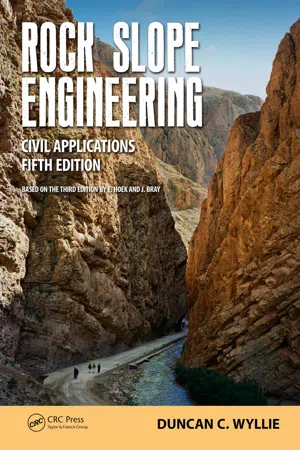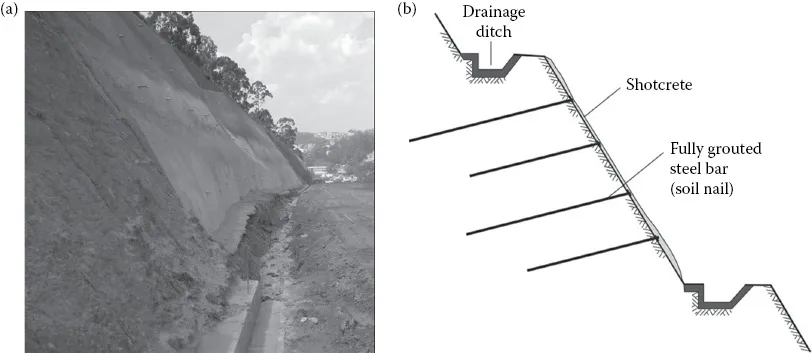
- 568 pages
- English
- ePUB (mobile friendly)
- Available on iOS & Android
About This Book
Rock Slope Engineering covers the investigation, design, excavation and remediation of man-made rock cuts and natural slopes, primarily for civil engineering applications. It presents design information on structural geology, shear strength of rock and ground water, including weathered rock. Slope design methods are discussed for planar, wedge, circular and toppling failures, including seismic design and numerical analysis. Information is also provided on blasting, slope stabilization, movement monitoring and civil engineering applications.
This fifth edition has been extensively up-dated, with new chapters on weathered rock, including shear strength in relation to weathering grades, and seismic design of rock slopes for pseudo-static stability and Newmark displacement. It now includes the use of remote sensing techniques such as LiDAR to monitor slope movement and collect structural geology data. The chapter on numerical analysis has been revised with emphasis on civil applications.
The book is written for practitioners working in the fields of transportation, energy and industrial development, and undergraduate and graduate level courses in geological engineering.
Frequently asked questions
Information


Table of contents
- Cover
- Half Title
- Title Page
- Copyright Page
- Dedication
- Contents
- List of tables
- List of figures
- Introduction to the fifth edition
- Foreword to fifth edition
- Foreword to fourth edition
- Authors
- Nomenclature
- Authors
- 1. Principles of rock slope design
- 2. Structural geology and data interpretation
- 3. Weathered rock and slope stability
- 4. Site investigation and geological data collection
- 5. Rock strength properties and their measurement
- 6. Groundwater
- 7. Plane failure
- 8. Wedge failure
- 9. Circular failure
- 10. Toppling failure
- 11. Seismic stability analysis of rock slopes
- 12. Numerical analysis
- 13. Blasting
- 14. Stabilisation of rock slopes
- 15. Movement monitoring
- 16. Civil engineering applications
- Appendix I: Stereonets for hand plotting of structural geology data
- Appendix II: Quantitative description of discontinuities in rock masses
- Appendix III: Comprehensive solution wedge stability
- Appendix IV: Conversion factors
- References
- Index